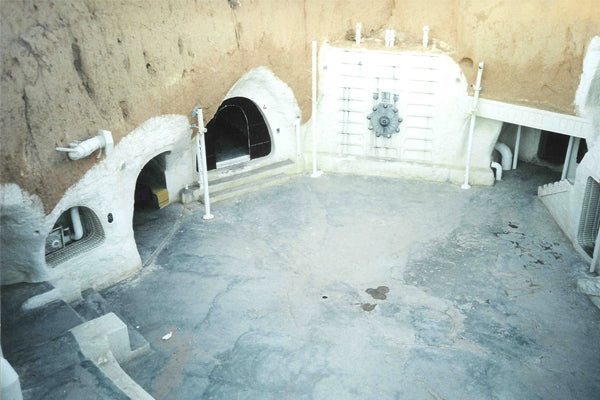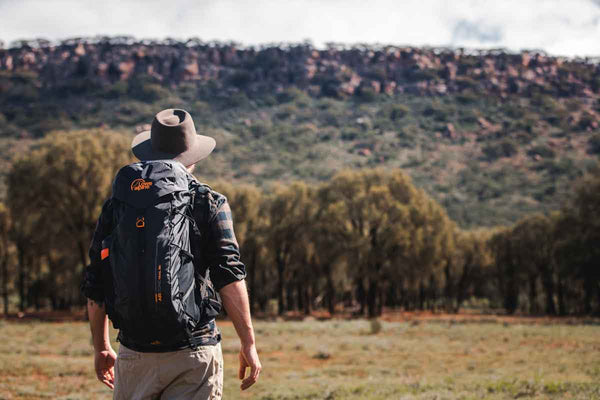
Touring Tatooine & the Jungland Wastes
When you think ‘Tunisia’, what comes to mind? Mediterranean beaches? Of course. Couscous? Certainly. The ruins of Carthage? Perhaps. All of these elements contribute to the charm of this North African republic, but for visitors of a certain generation and inclination, the prospect of a visit to these shores stirs excitement of a strictly geeky variety. For the southern lands hold concealed treasures from a long time ago, in a galaxy far, far away.
When George Lucas was scouting locations in 1976 in which to set his desert planet - Tatooine, named for a local town - he chose Tunisia for its barren, unremitting environment. At the edge of the Sahara, assorted inhospitable settings combine to produce a collection of eerie backdrops - craggy canyons; windswept dunes; dry salt lakes. The small nation has always welcomed filmmakers, and I was later to explore the wasteland near the Algerian border which served as scenery for The English Patient, and cavort in the Ribat of Monastir, familiar from the lunacy of Monty Python’s Life of Brian (“Romanes eunt domus? People called Romanes they go the house?”)
After Roman legions sacked the Phoenician city of Carthage in 814 B.C., their empire in North Africa stretched as far west as Morocco. The enormous Antonine baths rivalled those of Pompeii, and the amphitheatre at El-Jem was the third largest in the world. Throughout subsequent rule by Arabs, Ottomans and the French, the indigenous Berber people have survived. Like the Bedouin to the east, the Tuareg uphold their culture of nomadic pastoralism, living as they always have.
It was at El-Jem that I first noticed something scarily familiar. The traditional garment is a dark brown woollen cloak with short sleeves and a hood which covers the face. One minute I was admiring the robust arches of the coliseum, the next I was surrounded by jabbering Jawas, tugging at my clothes and trying to sell me droids. Then the illusion passed, and it was just the men of the town chatting about their day as they strolled home.
That afternoon, I arrived in Matmata, a desert village whose inhabitants have escaped the heat by digging their homes underground. Like the cloaks, this local activity inspired a significant feature of Star Wars - that of Luke Skywalker’s subterranean homestead. Like that heroic troglodyte, the homes here consisted of an open cast courtyard, off which were excavated living chambers, and which was entered through a short tunnel. From the bus stop, the plain ahead of me harboured no buildings, but was pockmarked with large round craters, each serving as the skylight for a family residence. The only hotel was the Sidi Driss - the very ‘house’ in which the Lars homestead interiors had been filmed 25 years ago.

Sidi Dris Hotel
Whilst I had been looking forward to this, I was shocked to discover all of the sci-fi fixtures and fittings present and correct. The moisture vaporators looked like they’d been serviced yesterday! By some incredible stroke of fortune, it turned out that George et al had been here only months previously, conducting principal photography for Episode II: Attack of the Clones! For its brief appearance, the Sidi Driss had been refurbished to match the scenes in A New Hope. I wandered around in a daze, living a dream from when I was four years old.
Several sites were clustered around the dusty city of Tozeur, spurned by most tourists in favour of the number one attraction - the camel that drinks Coca-Cola! Denying myself that pleasure, I armed myself with a dodgy rented scooter and directions from some fan boy website, and sped off down the desert road, the tiny engine buzzing like a mosquito. Eventually I reached a turn off labelled Le Grande Dune. It looked like any other pile of sand , except that this was the Dune Sea, where R2-D2 and C-3PO landed in their escape pod. Impressed? Thought not. Now of course it was bare but for the ubiquitous black plastic carrier bags that decorate most urban desert.

Chott El Jerid
Accessed nearby was a vast salt pan - Chott El-Jerid - the north part of which I had crossed via a spectacular causeway on my way south. The totally flat, empty basin extended into the distance, the cracked surface shimmering in the heat haze. Mirages pooled arid water in every direction. I could see nothing, and no navigational assistance except a slew of tyre tracks heading into oblivion. I followed them. A spot on the horizon grew into a wart, and then into a small hut as my moped propelled me onward. When I arrived, it proved to be the homestead again, but this time the base for the external shots. For the prequels, the squat dome had been freshly rebuilt along with banked soil intended to convey the hole in the ground through which Luke looked, via the magic of Hollywood, into the Sidi Driss courtyard. I tore off some of the rubber doorway lining and stuffed it into my pockets. I was taking home a souvenir from another world! Alone, I gazed at Tatooine’s twin suns setting over the desert, wondering if I would be allowed to transmit my application the academy this year, before the harvest. Sad man.

Sidi Bouhel - The ambush spot
The last location I visited near Tozeur was Sidi Bouhel aka the Jungland Wastes. Principally a beautiful, boulder scattered canyon leading toward the edges of the distant Atlas mountains, its natural splendour was enhanced by an immediate recognition of the spot where R2-D2 was ambushed by Jawas, and again where Luke was saved from Tusken Raiders by Obi-Wan-Kenobi! This was such a thrill! From the rocky outcrop atop the sandstone cliffs, I could see out over the desert to Mos Eisley - that “wretched hive of scum and villainy”.
Of course, Mos Eisley didn’t really exist. But Mos Espa (from Episode I) did. At least, the small non-computer generated portion of it. An entire free-standing street had been constructed miles out among the Saharan dunes, and the rest would be filled in later with special effects. Despite the contradictory nature of the scenery: -mud dwellings sporting futuristic technology - this set reminded me of a town I had once visited not a million miles away.

Mos Espa
Across the expanse of the Libyan desert, on the western edge of Egypt, lies an oasis named Siwa. A fertile green puddle in a land of scorched earth, this isolated haven had supported a small community for centuries. Although the modern settlement was of square, whitewashed buildings, Old Siwa had been a magnificent fortress perched on high, safe ground. Once, these tall, mud brick walls had stood proud and iridescent under the dawn sun, overlooking the palms and lakes - a living monument of an ancient culture. Then, in 1926, a freak heavy rain had washed away the structures, destroying the town and displacing the population. Although Siwa has been rebuilt with contemporary materials, the remains of the former stronghold still stand on the hill in the centre of town, surrounded by its progeny.
As I wandered between the hastily constructed façades of mock wattle and daub, I pondered their similarity to Old Siwa. Had the instinctive architecture of thousands of independent pre-civilised cultures around the globe contributed to the design of a science fiction film? Or had a small band of Jedi Knights fled the Empire through hyperspace and founded a new society on our world? It was hard to tell, but either way I was sure of two things - the barren beauty of North Africa, and that the Star Wars prequels were rubbish.






